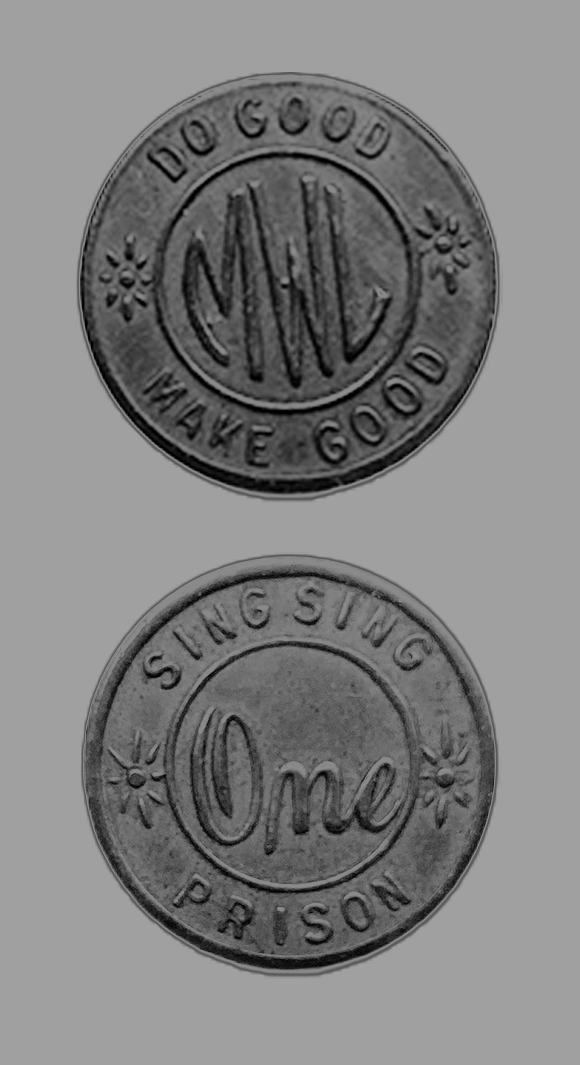Electric Chair
punish
614 people, including 8 women, died in the electric chair at Sing Sing from 1891 to 1963.
Though Sing Sing was not the first prison in America to execute people with electricity—Thomas Edison’s design was introduced upstate at Auburn Prison in 1890—it has become inextricably linked with the stark image of the electric chair nicknamed “Old Sparky,” made infamous through legend, art, and pop culture.
Promoted as a “more humane” alternative to execution by hanging, the electric chair was invented by dentist Alfred Southwick and refined by Edison, who consulted with the New York State Commission on Human Execution. In Edison’s industrial battles with George Westinghouse and Nikola Tesla, he staged public exhibitions of electrocution of animals to show that his rivals’ alternating current approach was too dangerous for public safety, and sought to emphasize this link by referring to electrocution as “Westinghousing.”
Throughout human history, the spectacle of execution is inextricably intertwined with the act. Crowds gathered to watch public hangings and people burned at the stake. With the rise of newspaper journalism, cinema, and later broadcast news, people no longer needed to gather in person to indulge in the spectacle. After Sing Sing became the only prison in New York State to perform executions in 1916, it garnered significant attention from the media and prison reformers on the national debate on capital punishment.
The only photograph of an execution at Sing Sing was in January 1928, where a hidden camera taped to the ankle of Daily News reporter Tom Howard recorded the electrocution of Ruth Snyder, amplifying the ongoing ethical debate about the public’s desire to witness death by execution.
In 1950, Julius and Ethel Rosenberg were convicted of espionage for allegedly passing nuclear secrets to Russia and sentenced to death. They waited in Sing Sing Prison’s condemned cells for two years while artists, poets, and writers such as W.E.B. DuBois, Bertolt Brecht, Dashiell Hammett, Frida Kahlo, and Diego Rivera protested the sentence and petitioned for clemency. Pablo Picasso sketched portraits of Julius and Ethel and wrote in an editorial, “The hours count. The minutes count. Do not let this crime against humanity take place.“ Even a plea from Pope Pius XII had no effect. Julius and Ethel Rosenberg were executed by electric chair on June 19, 1953.
A decade later, pop artist Andy Warhol, fascinated by how the public is desensitized by tabloid press images of death and disaster, created a series of painted and screen-printed portraits of Sing Sing’s electric chair.
Advocates and activists utilize the documentary evidence of executions at Sing Sing to support their arguments for or against the death penalty. The records, created and archived by the supporting staff on death row—including doctors, electricians, and chaplains—were the subject of a recent book and exhibition, “Condemned” by Scott Christianson, former NYS deputy director of parole operations. The exhibition features letters written by prisoners in the final hours before execution. The letters are a haunting proof of life that is often overshadowed by the spectacle of the chair itself.
The electric chair continued to be used in New York until 1963. In 1994, Governor Pataki approved legislation to reinstate the death penalty through lethal injection, but in 2004 the New York Court of Appeals ruled that this law violated the state constitution. As of 2023, there are more than 25 states with the death penalty: Alabama, Arizona, Arkansas, California, Florida, Georgia, Idaho, Indiana, Kansas, Kentucky, Louisiana, Mississippi, Missouri, Montana, Nebraska, Nevada, North Carolina, Ohio, Oklahoma, Oregon, Pennsylvania, South Carolina, South Dakota, Tennessee, Texas, Utah, and Wyoming. In Arizona, California, Pennsylvania, Ohio, and Oregon, there are governor-imposed pauses on all executions.
Further Reading:
- +"'A War of Currents': The Real Story of Thomas Edison and the Invention of the Electric Chair" by Kevin Martin
- +"Rosenberg Case Files, July 22, 1947–January 13, 1985" by Department of Justice. Office of the U.S. Attorney for the Southern Judicial District of New York
- +"Carrying out executions took a secret toll on workers — then changed their politics" by Chiara Eisner
- +"How a New York Tabloid Captured the First Photo of an Execution by the Electric Chair" by Robert Klara
- +"Intimate View of the Death House; Exhibition on Sing Sing Tells of Last Meals and Final Moments" by Dimitia Smith
- +"States by State" by Death Penalty Information Center


